Surgery in 19th century revealed in gruesome historical documents
Anaesthetic to put patients to sleep was not discovered until the mid 1800s

Your support helps us to tell the story
From reproductive rights to climate change to Big Tech, The Independent is on the ground when the story is developing. Whether it's investigating the financials of Elon Musk's pro-Trump PAC or producing our latest documentary, 'The A Word', which shines a light on the American women fighting for reproductive rights, we know how important it is to parse out the facts from the messaging.
At such a critical moment in US history, we need reporters on the ground. Your donation allows us to keep sending journalists to speak to both sides of the story.
The Independent is trusted by Americans across the entire political spectrum. And unlike many other quality news outlets, we choose not to lock Americans out of our reporting and analysis with paywalls. We believe quality journalism should be available to everyone, paid for by those who can afford it.
Your support makes all the difference.Fingers sawn off, cheeks sliced wide open, and eyeballs pierced with scalpels - these are just some of the medical operations featured in a new book about 19th century surgery.
Annotations designed to guide the steady hands of surgeons in the 1800s have been published by a medical historian in a new book called Crucial Interventions.
The illustrations, which are from the archives of health foundation the Wellcome Trust, demonstrate how much pain patients were expected to endure without anaesthetic when a tumour or other bodily issue was discovered.
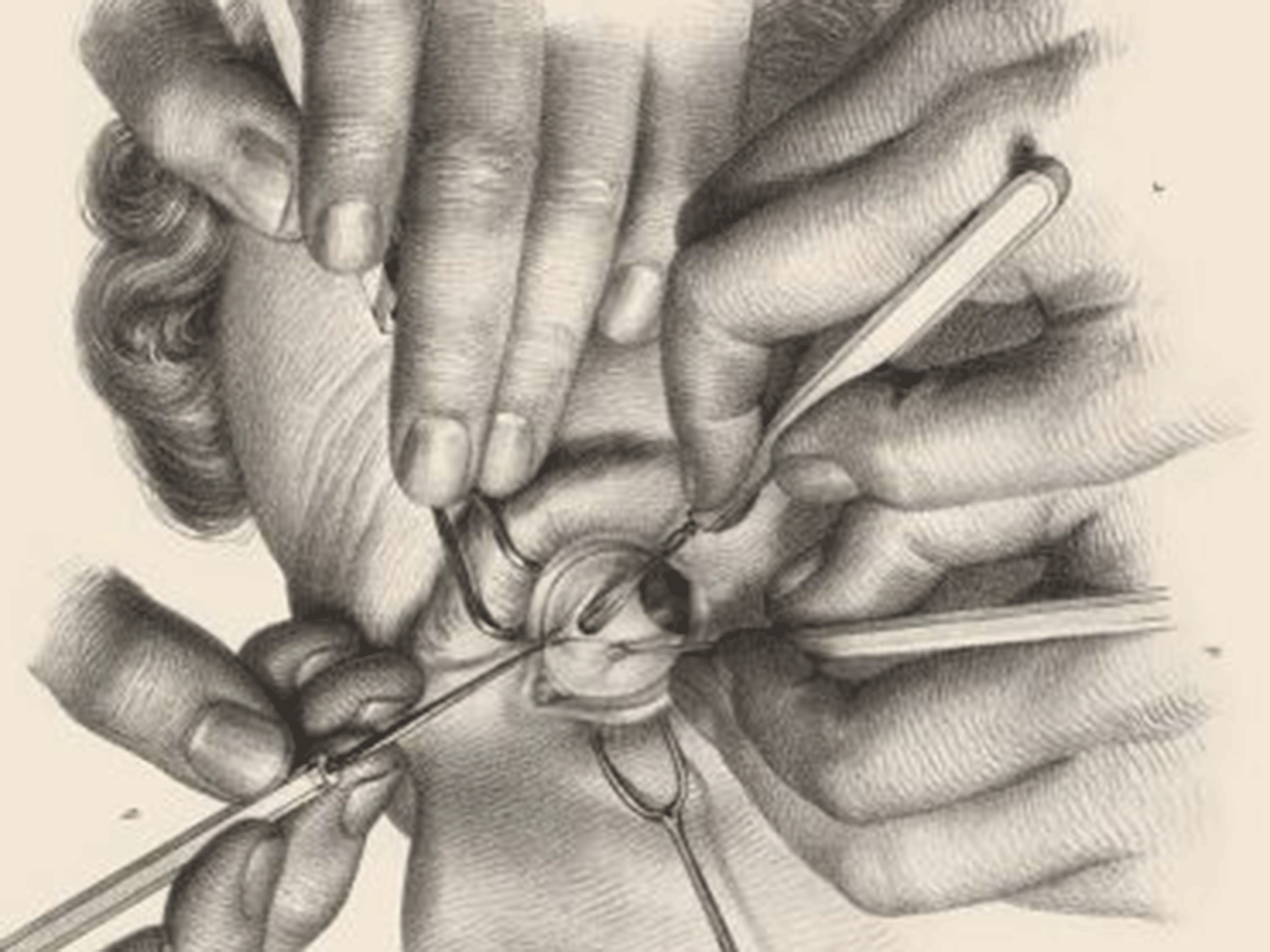
Eye operations were performed with a range of delicate and sharp tools, according to Richard Barnett, medical historian and the book's author.
Other operations showed entire swathes of skin been cut and peeled back, to reveal the bone structure beneath.
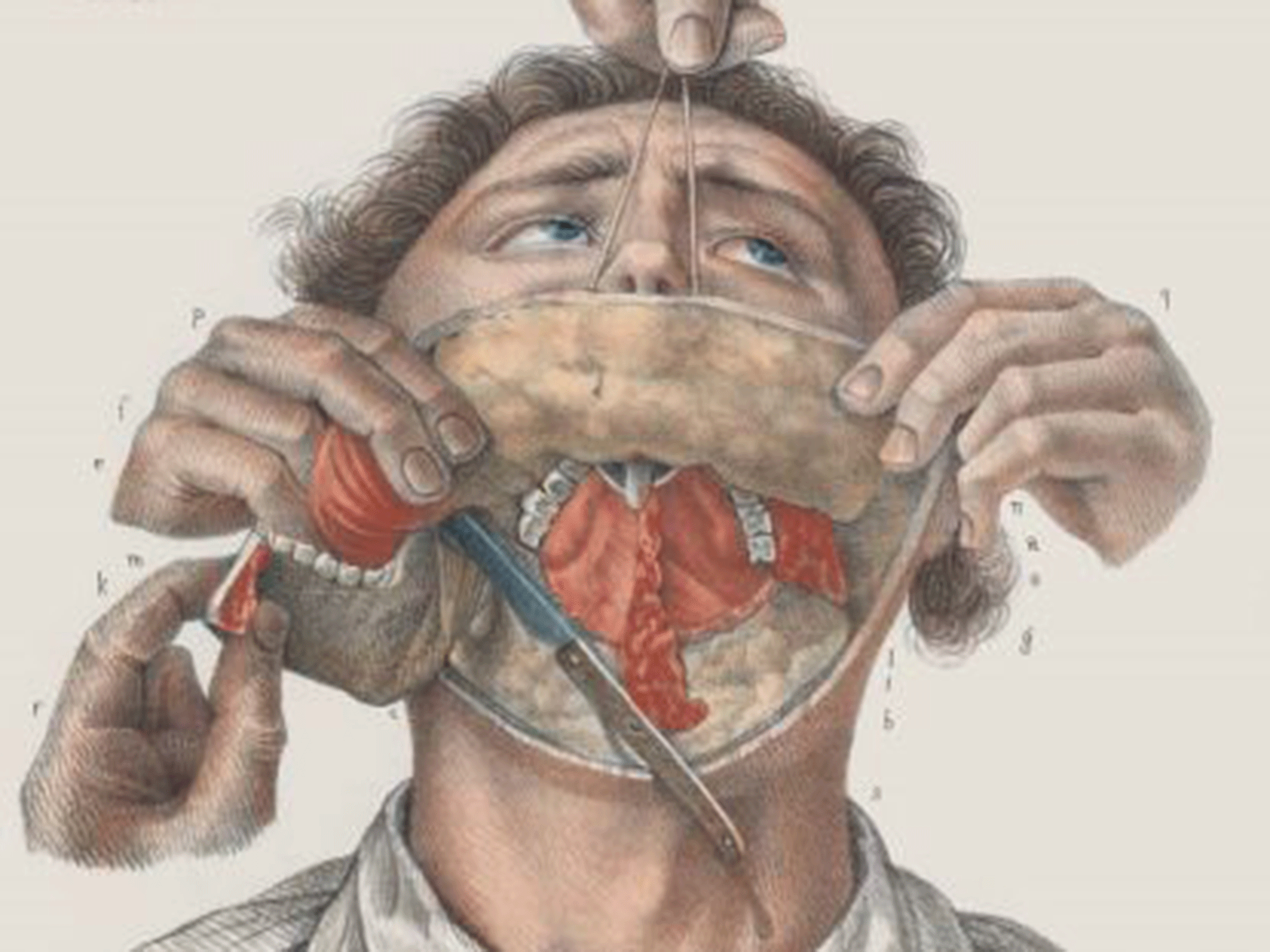
In a jaw operation, a patient would not necessarily have had anaesthetic and would have been sewn up again afterwards - risking infection if the incisions were not properly cleaned.
But advances were made throughout the 19th century, from being dubbed "a humiliating spectacle of the futility of science" by anatomist John Hunter in 1750, to anaesthesia being discovered in the mid 1800s.
Before then, many tumours were simply cut out while the patient tolerated the pain.
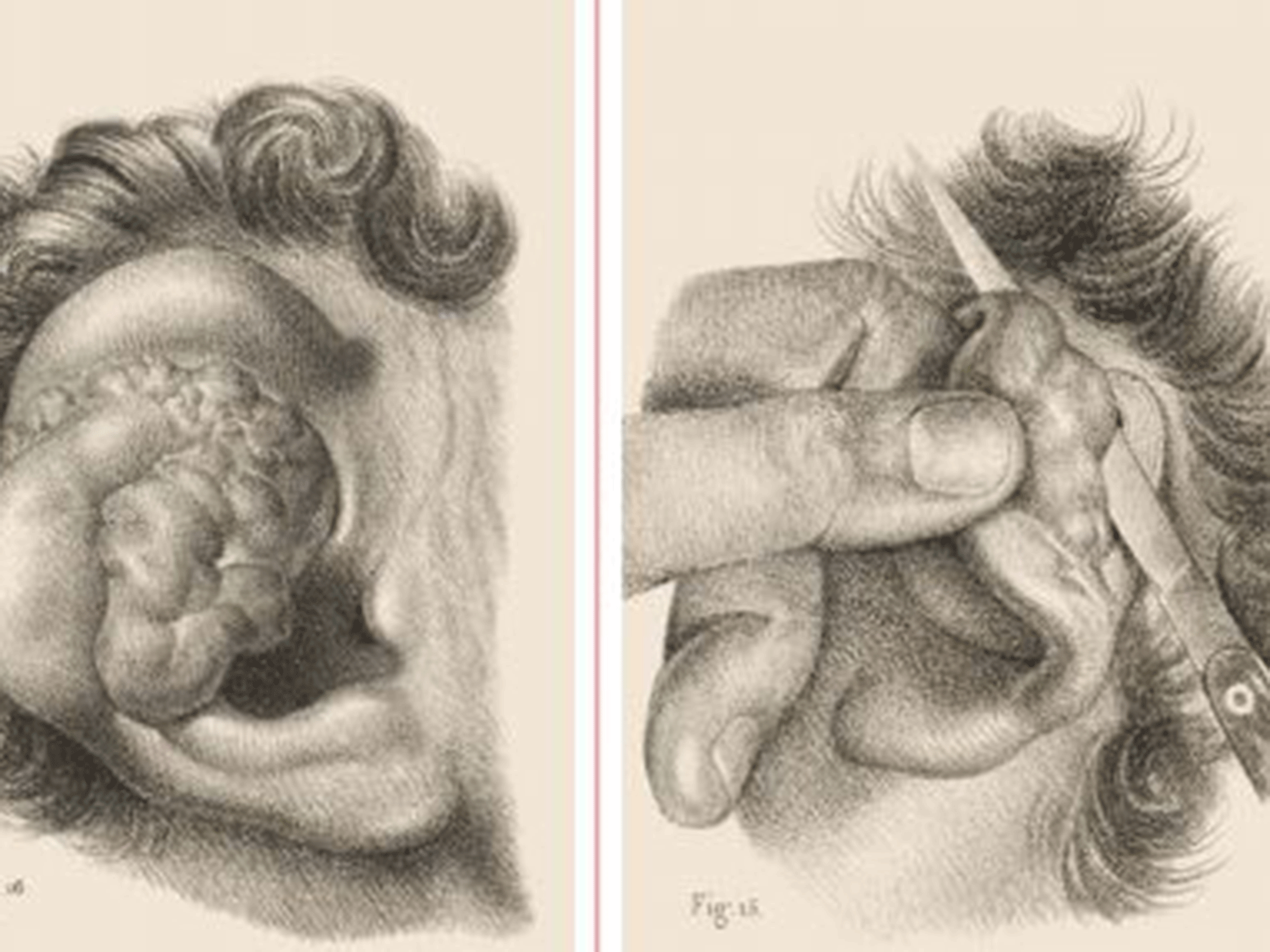
Cancer of the tongue was also removed in this way, with the muscle split apart and then sewn back together again.
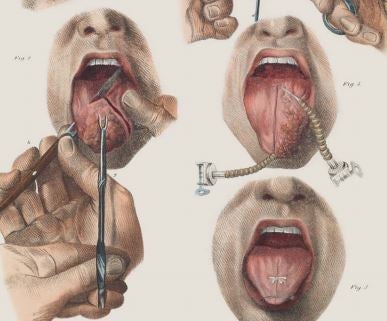
Fingers were similarly simply amputated if broken beyond repair and the skin sewn back over.
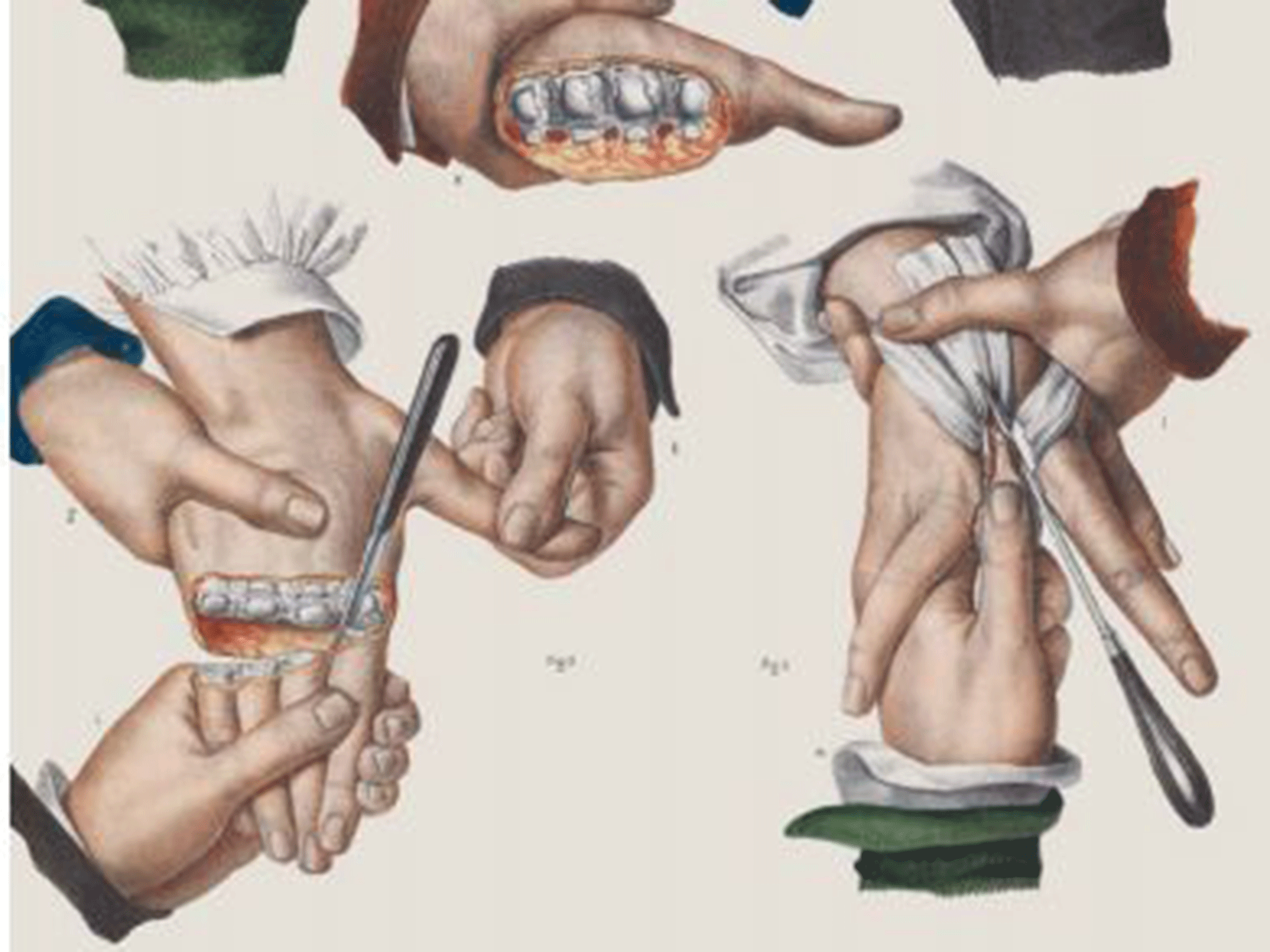
An arm might be amputated by cutting through the flesh with a large scapular, and taking the ball out of its joint.
Richard Barnett, author of the book, teaches the history of science, medicine and evolutionary theory at Cambridge University and University College London and works on public engagement with science at the Wellcome Trust.
Subscribe to Independent Premium to bookmark this article
Want to bookmark your favourite articles and stories to read or reference later? Start your Independent Premium subscription today.
Join our commenting forum
Join thought-provoking conversations, follow other Independent readers and see their replies
Comments